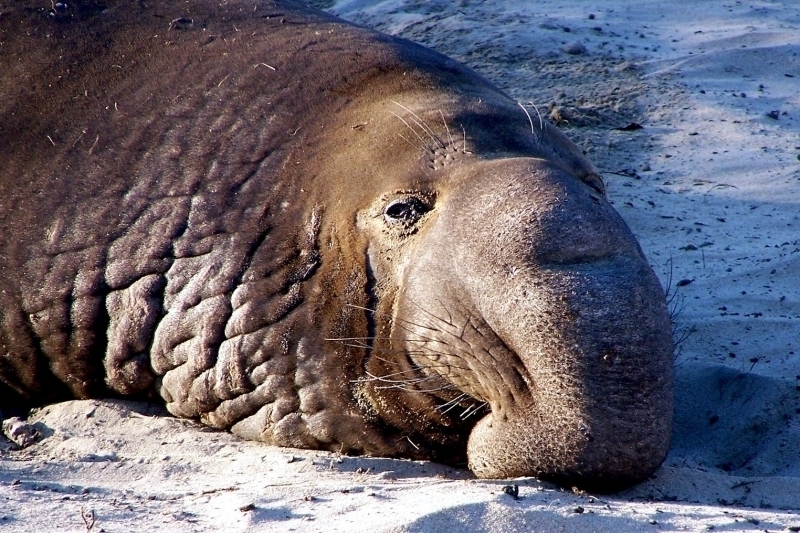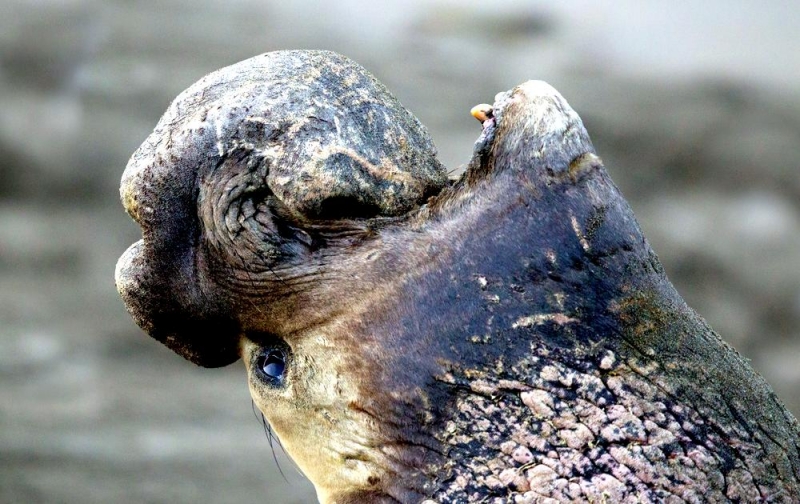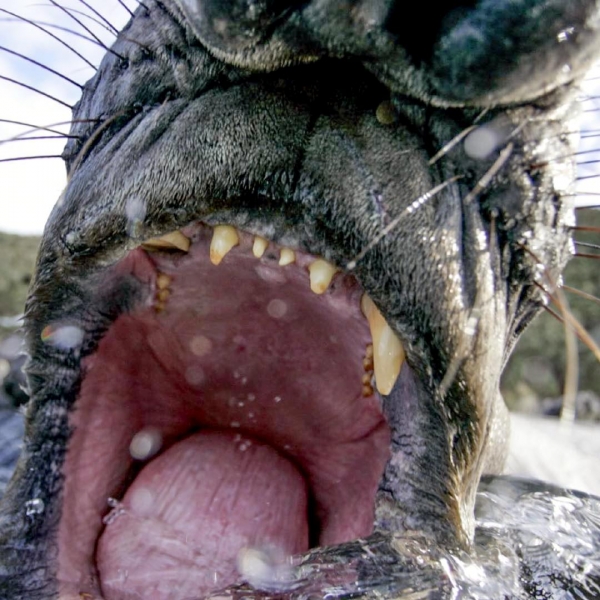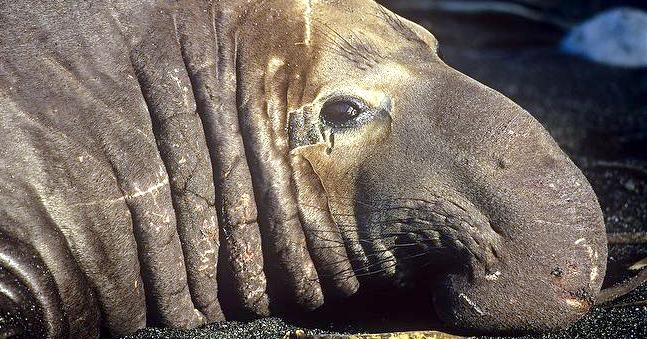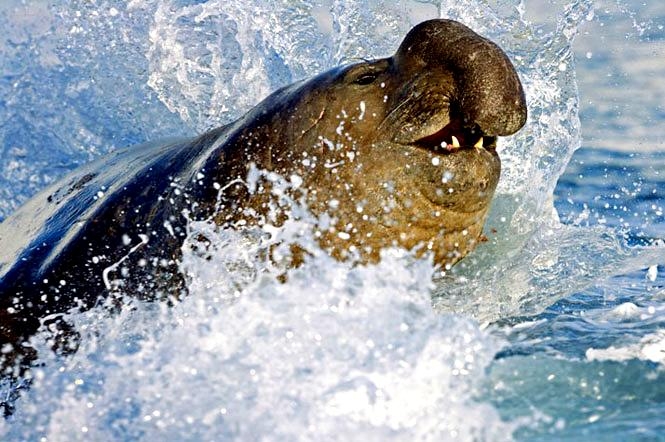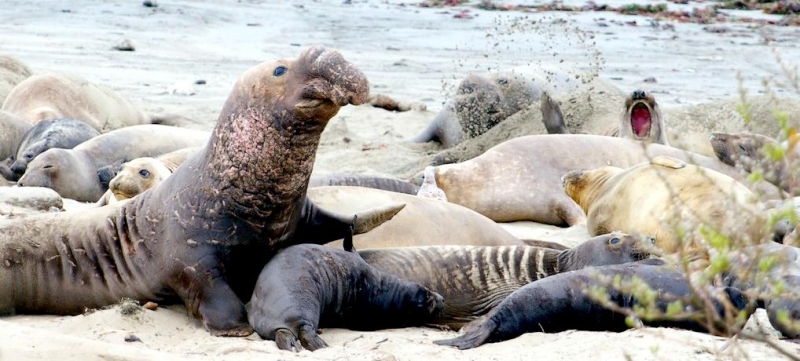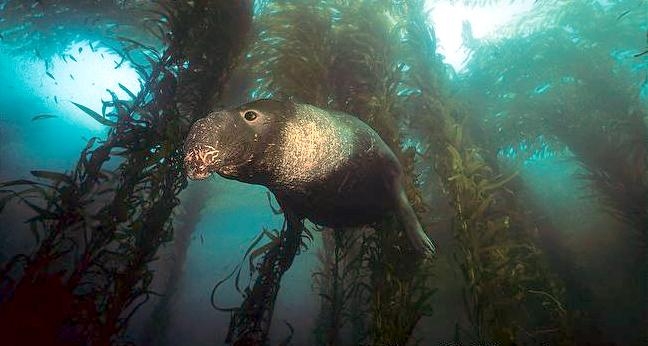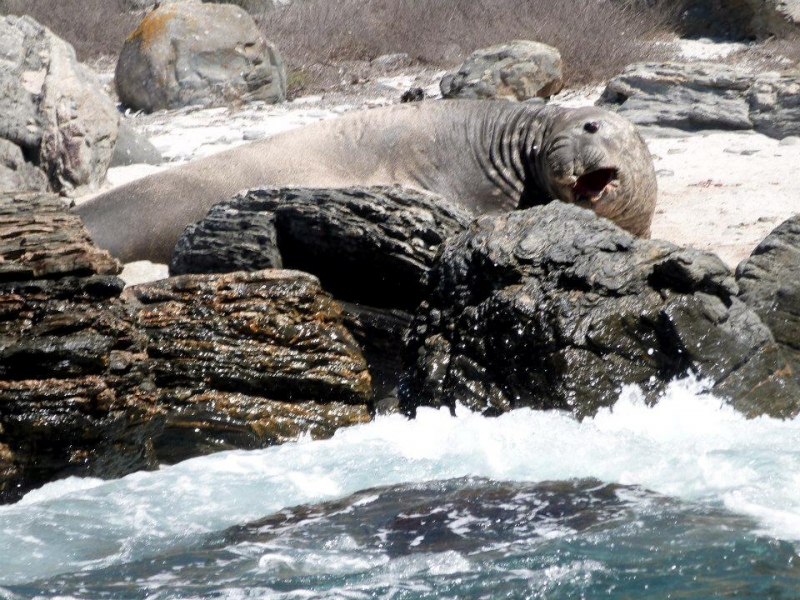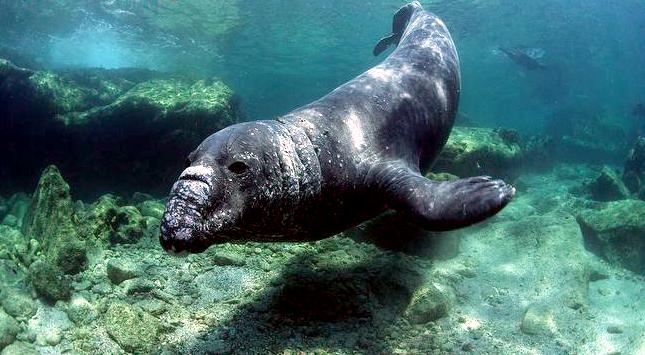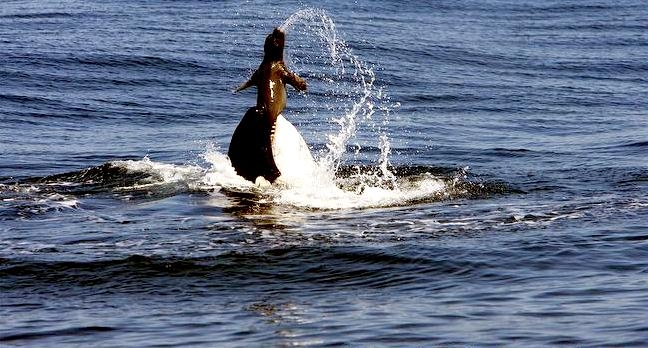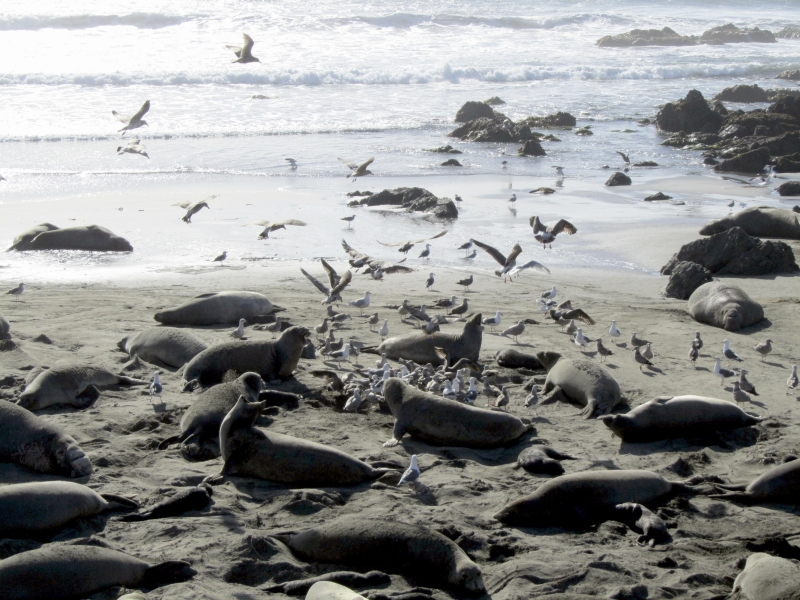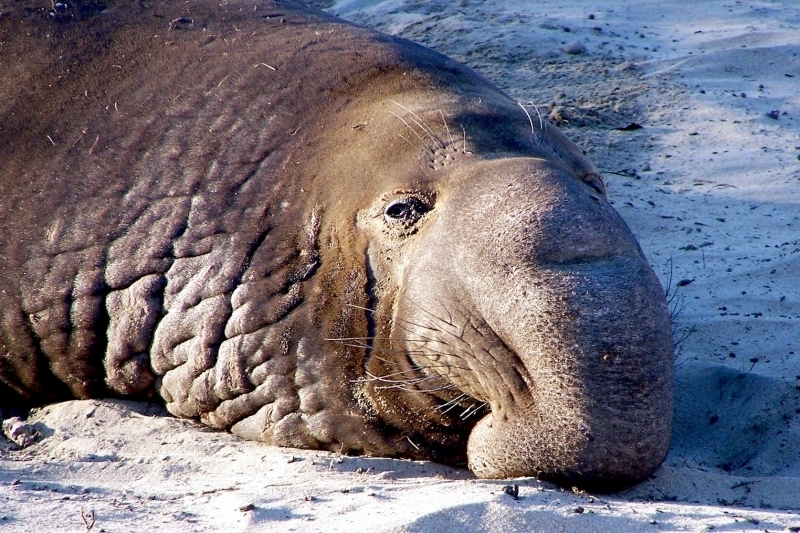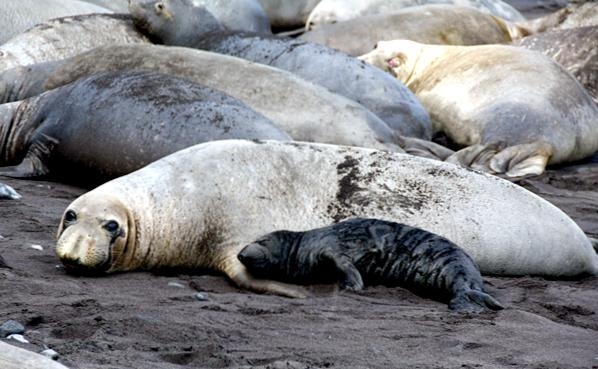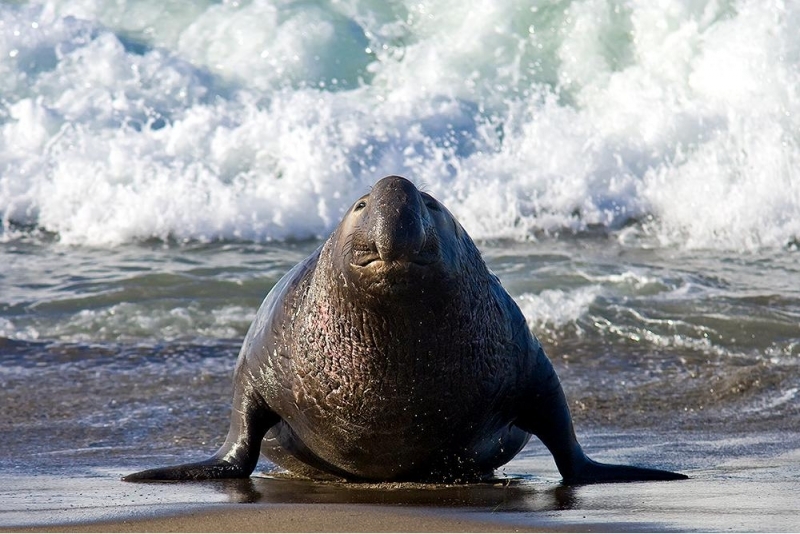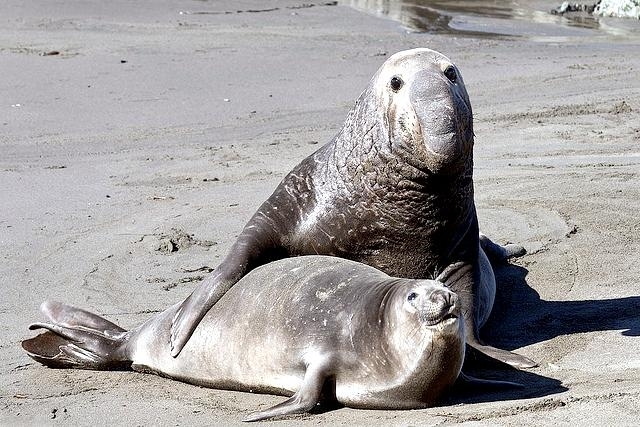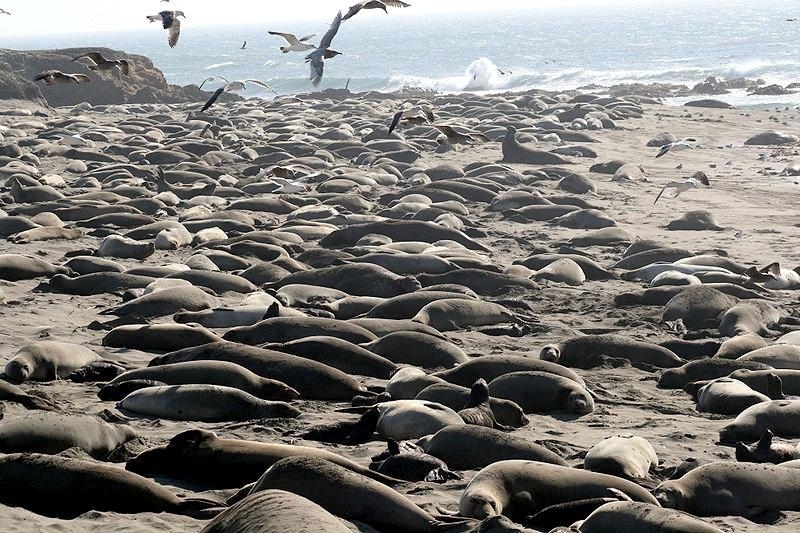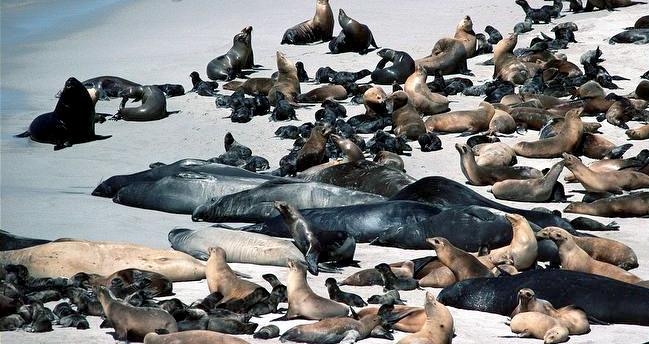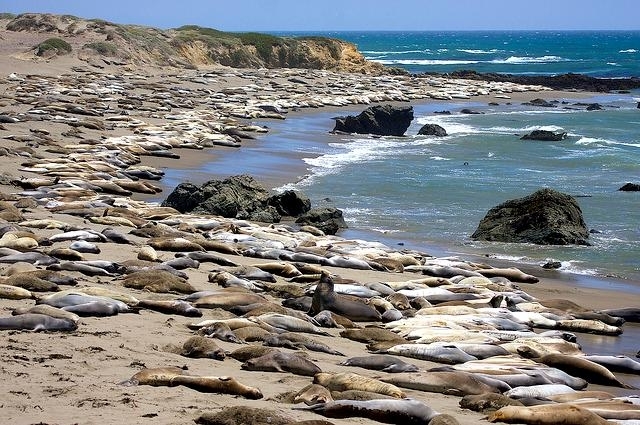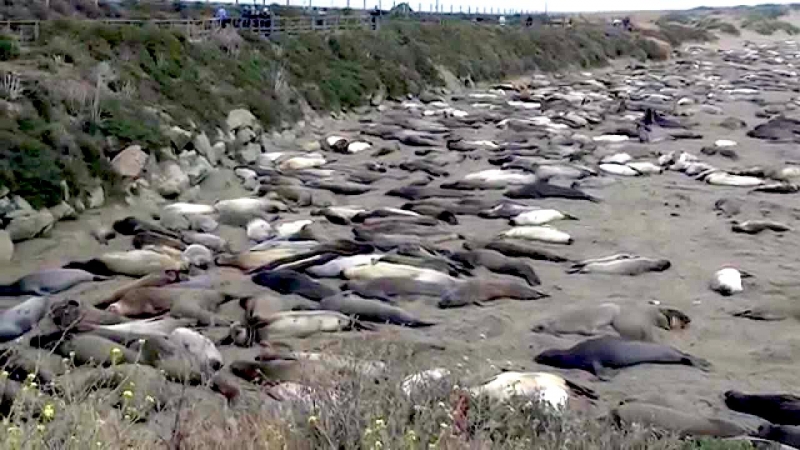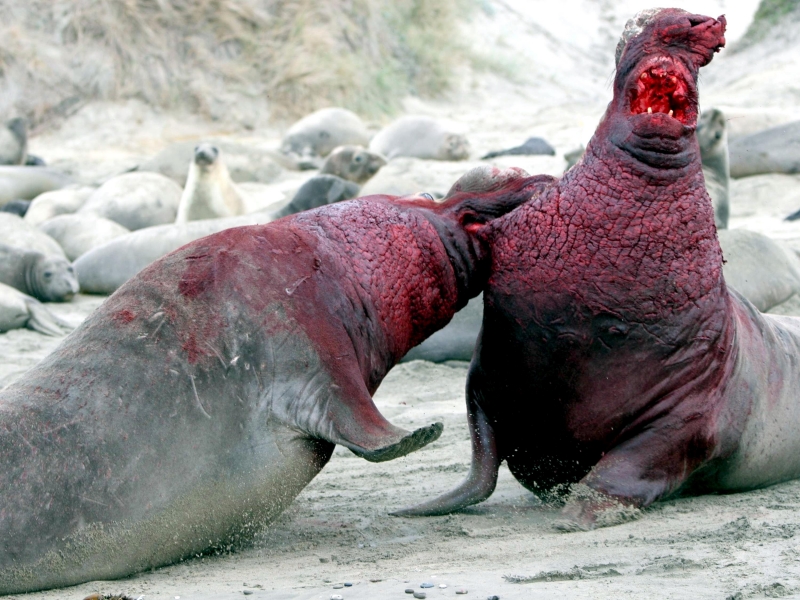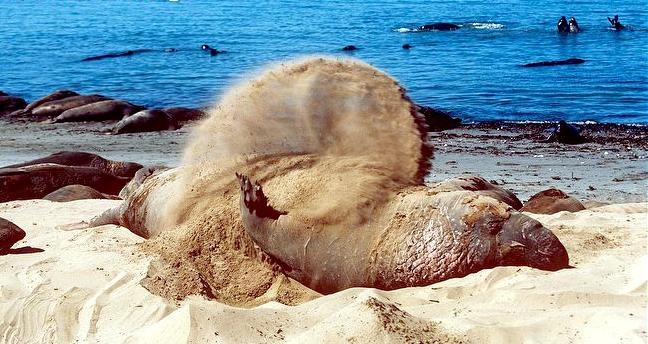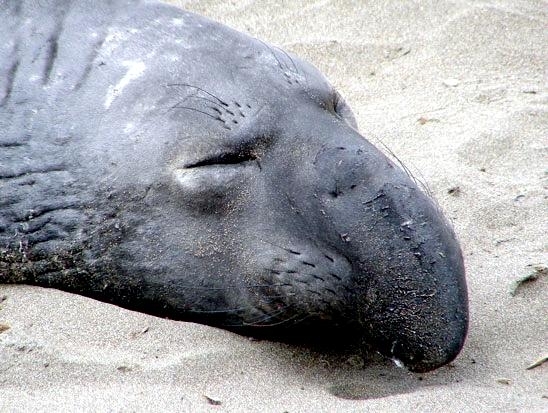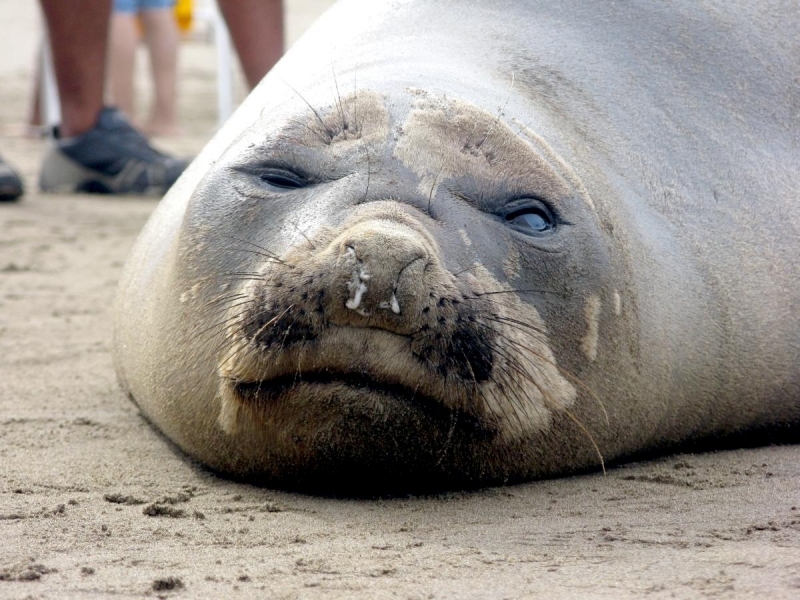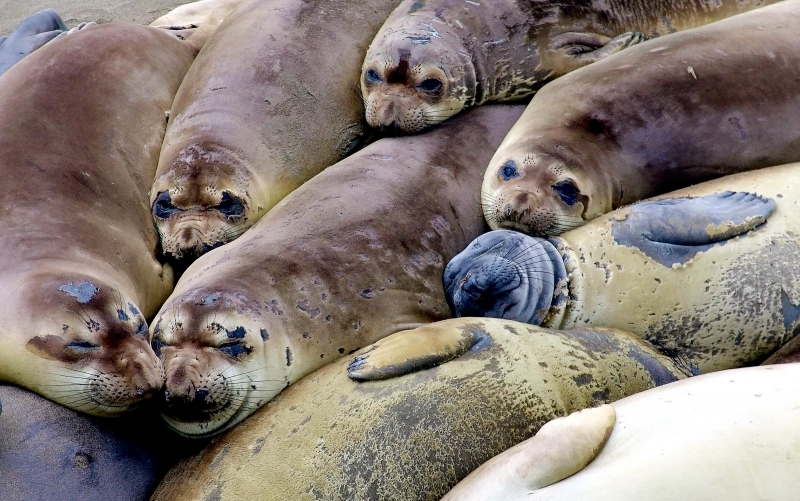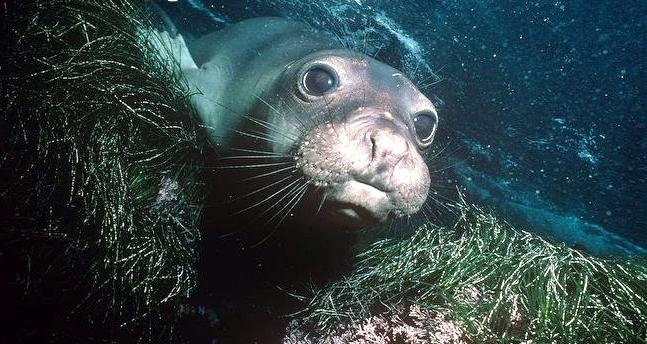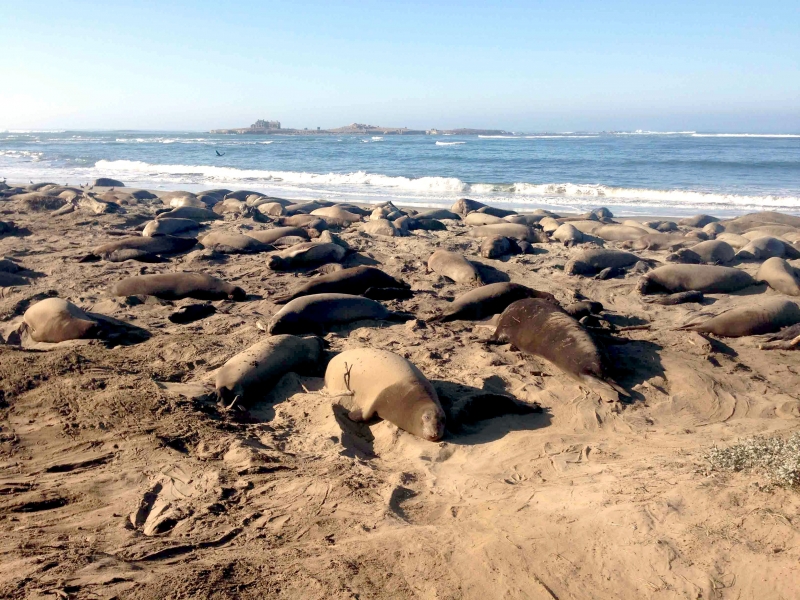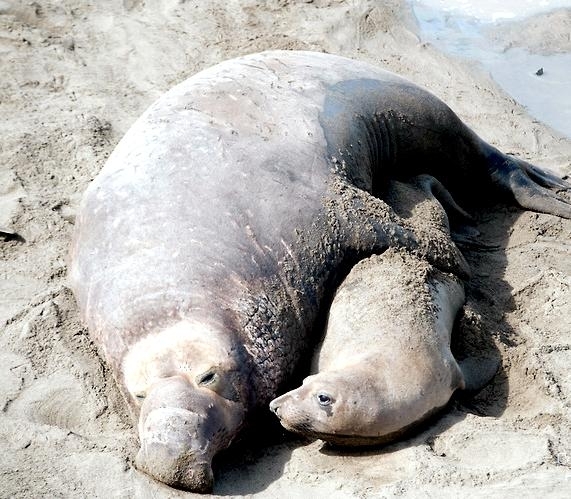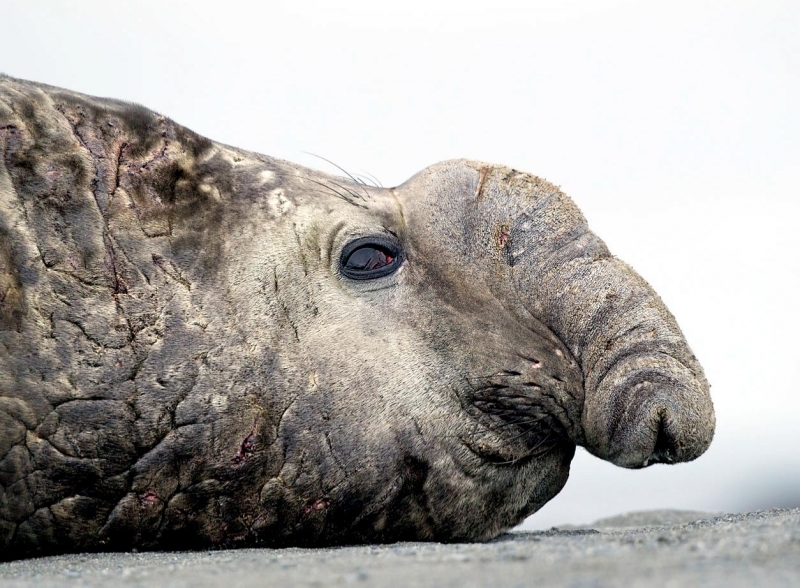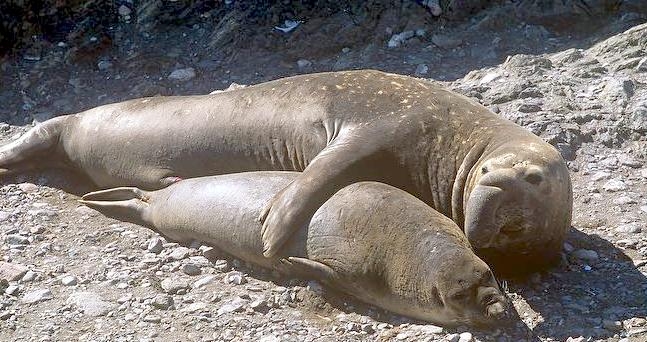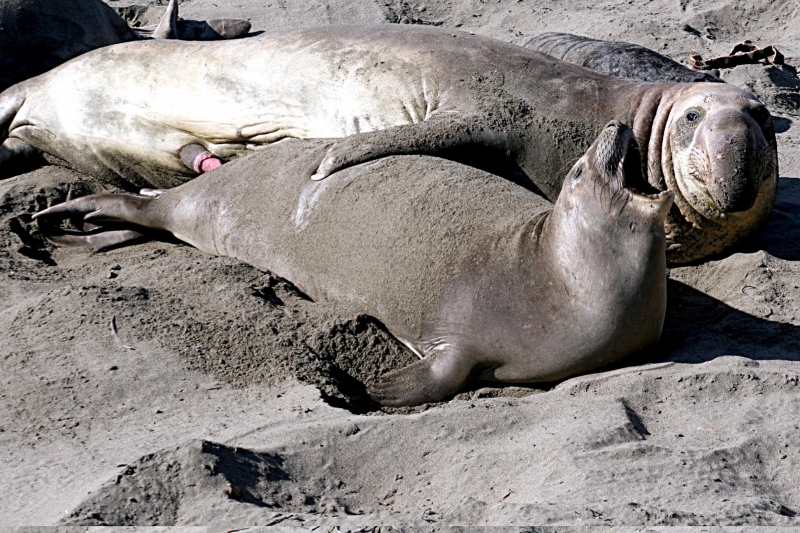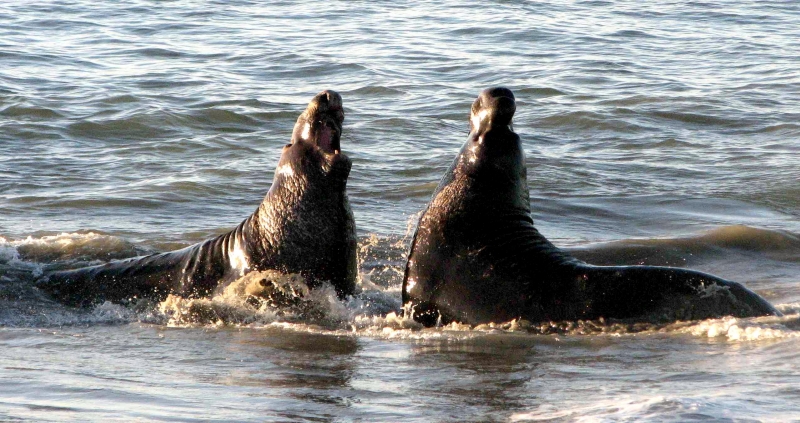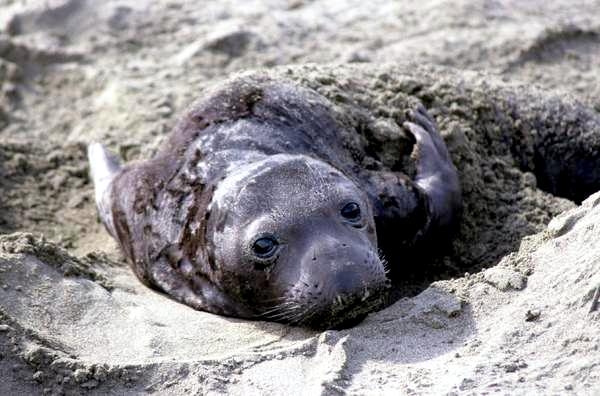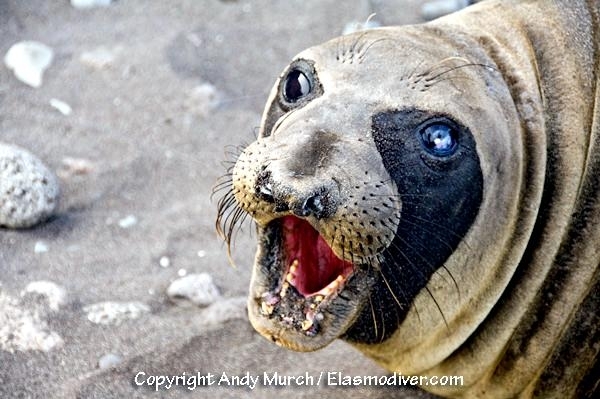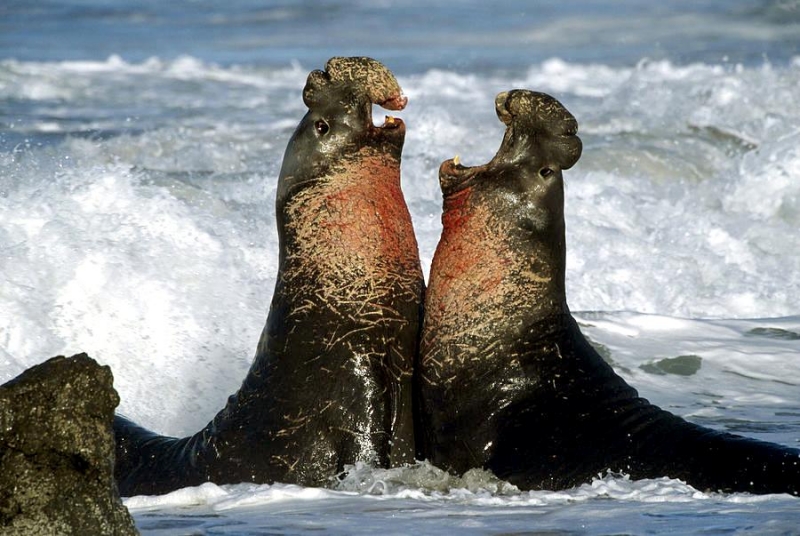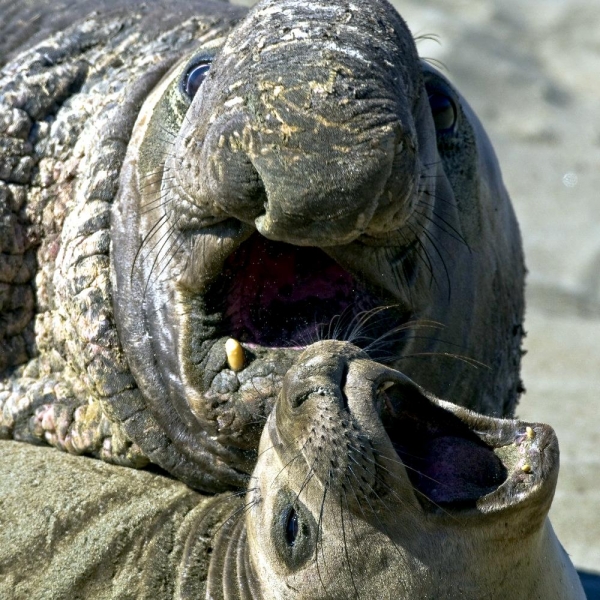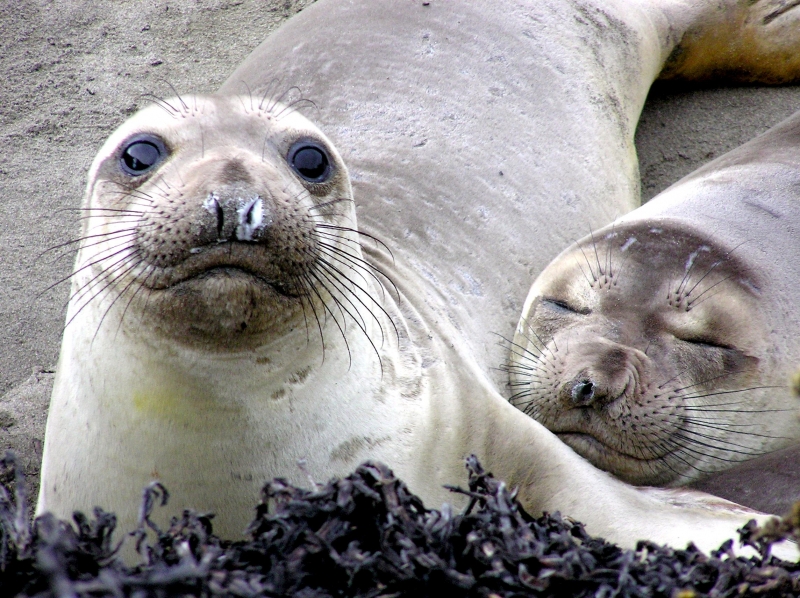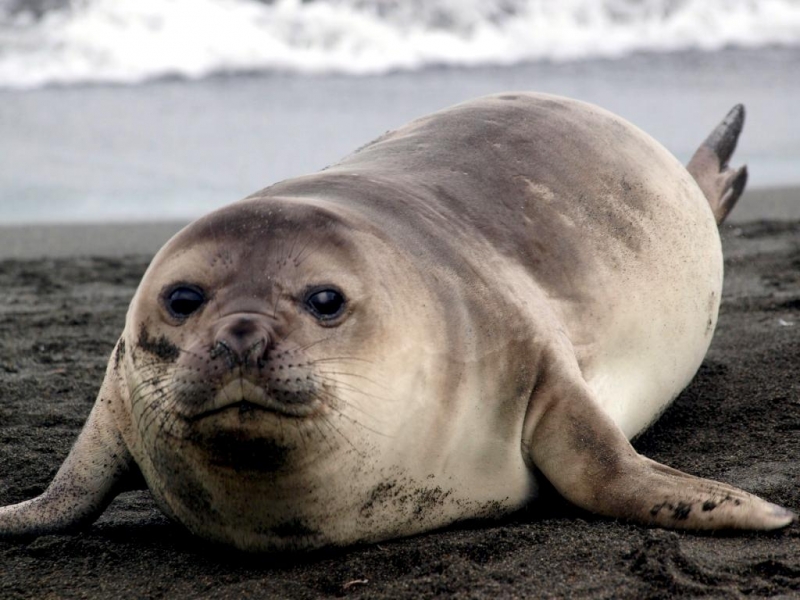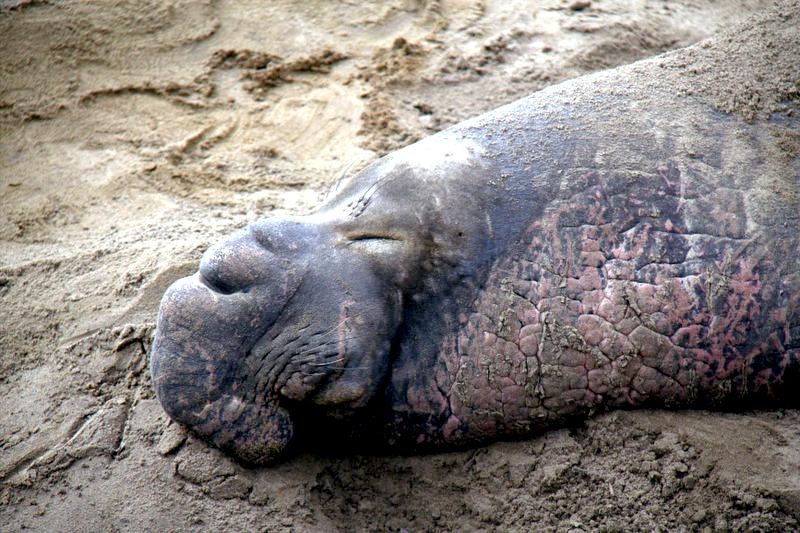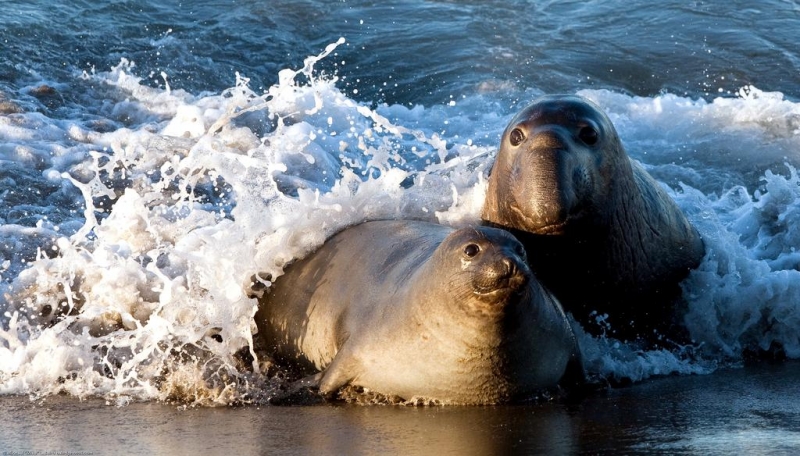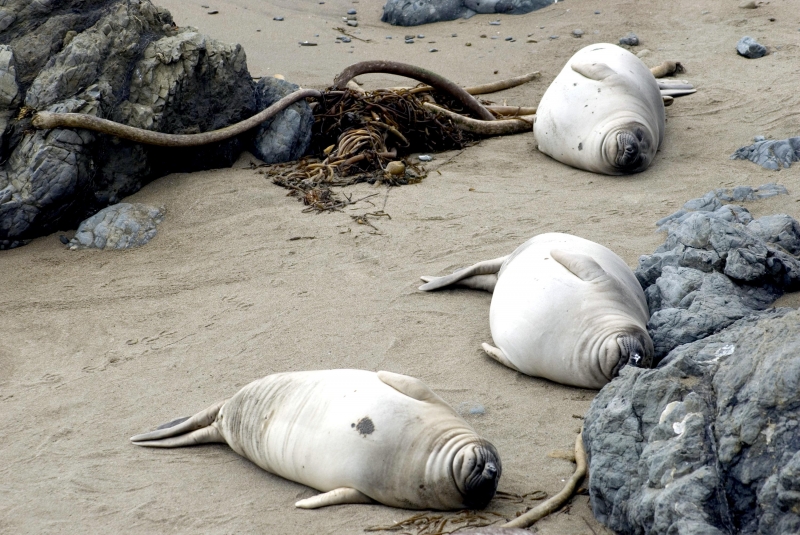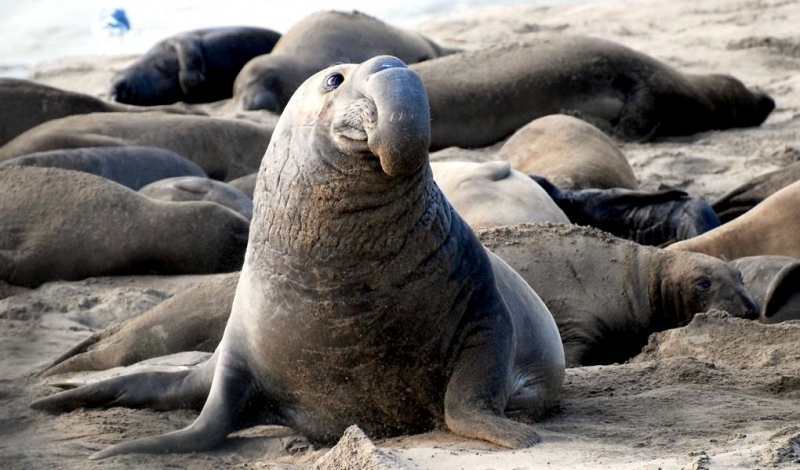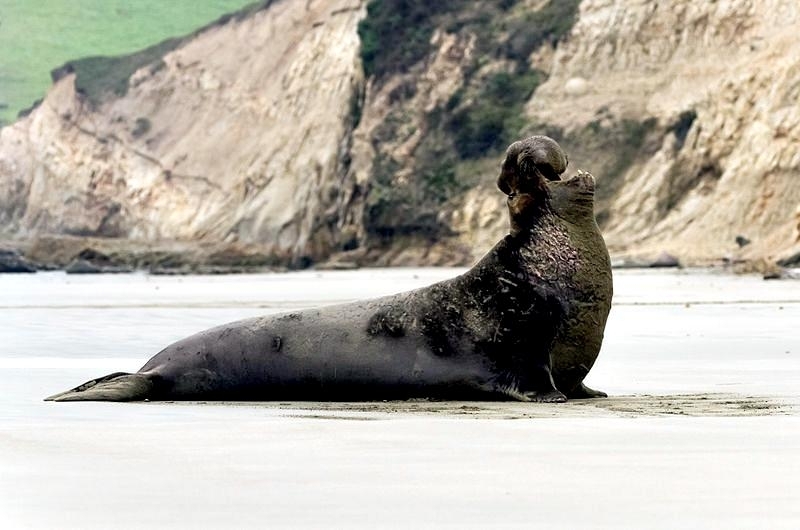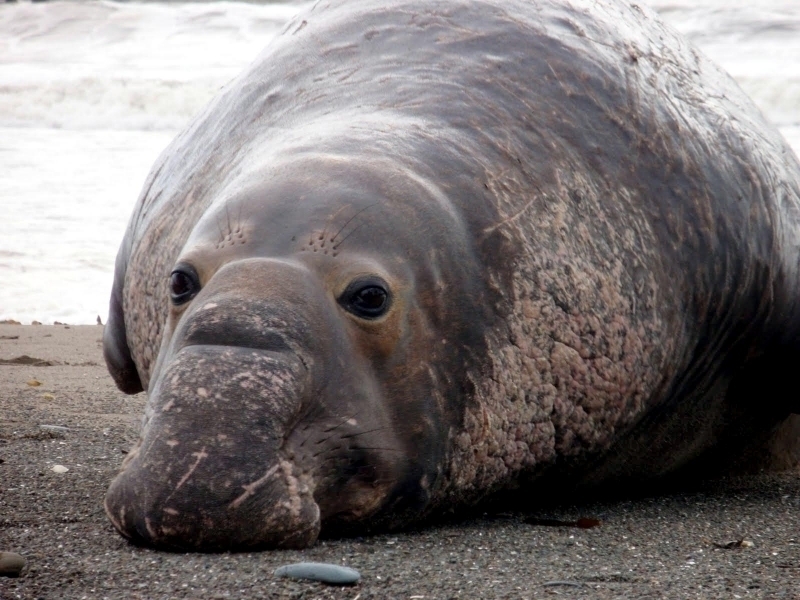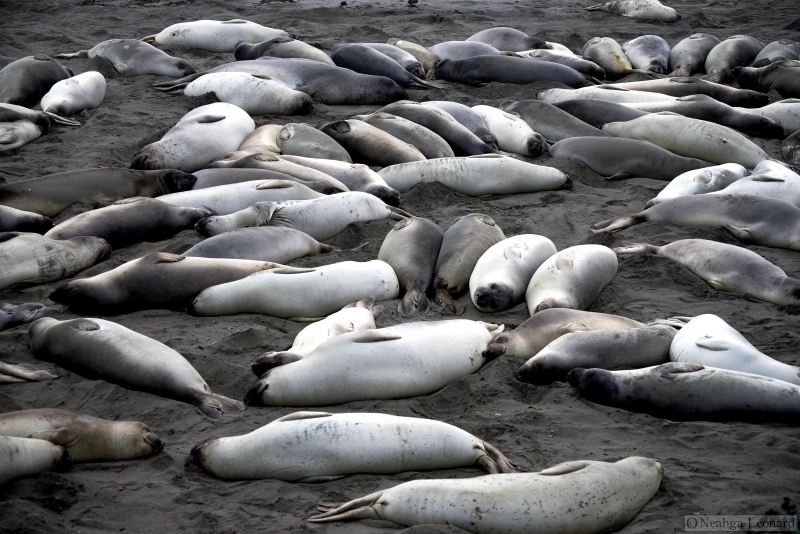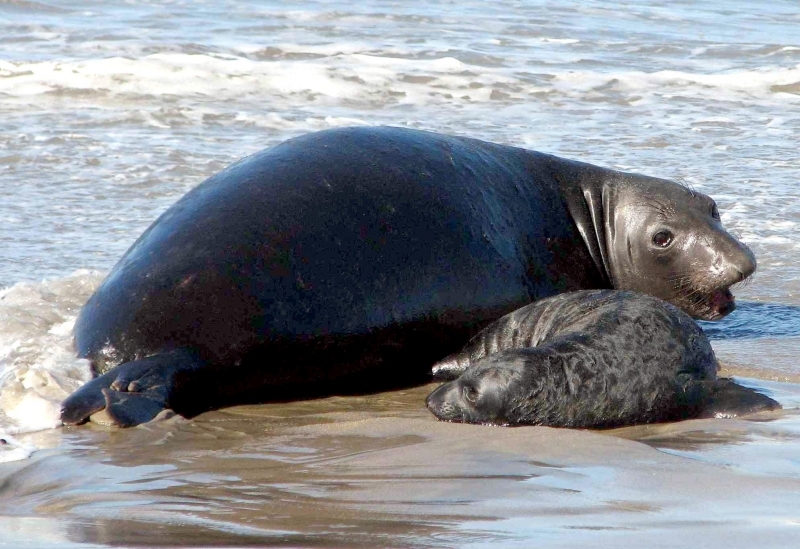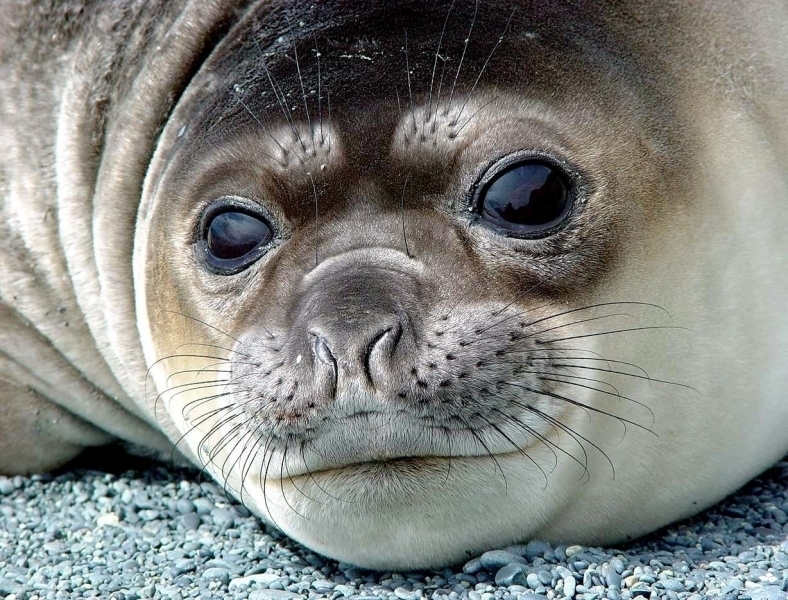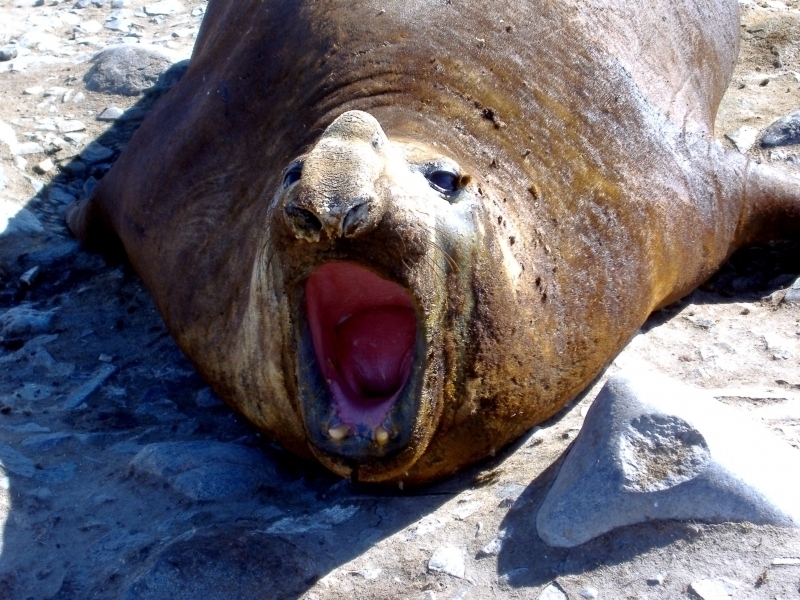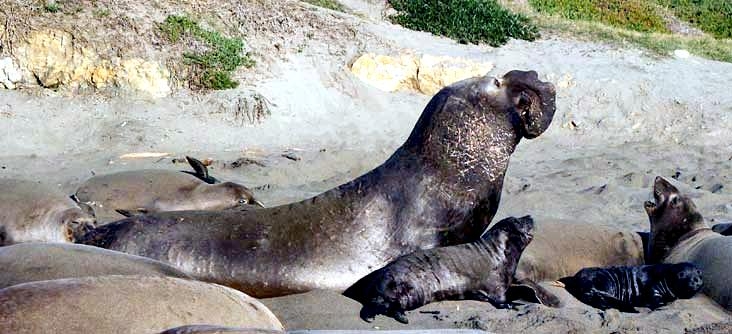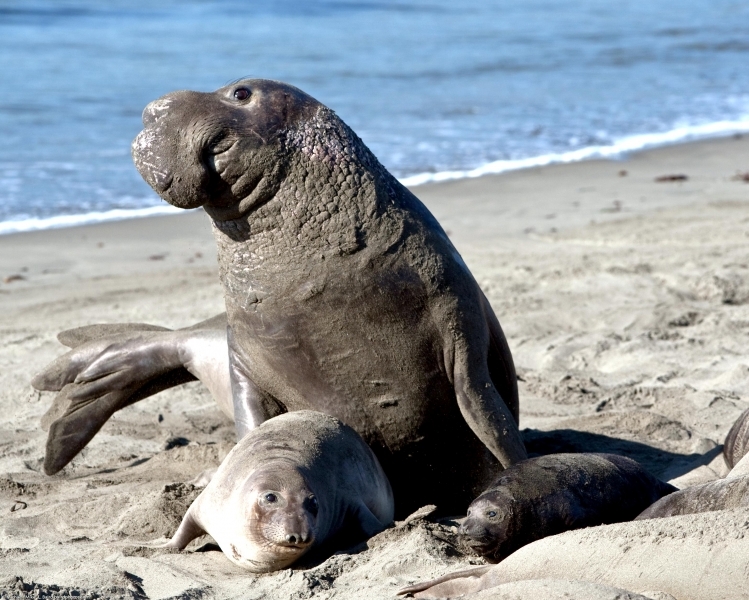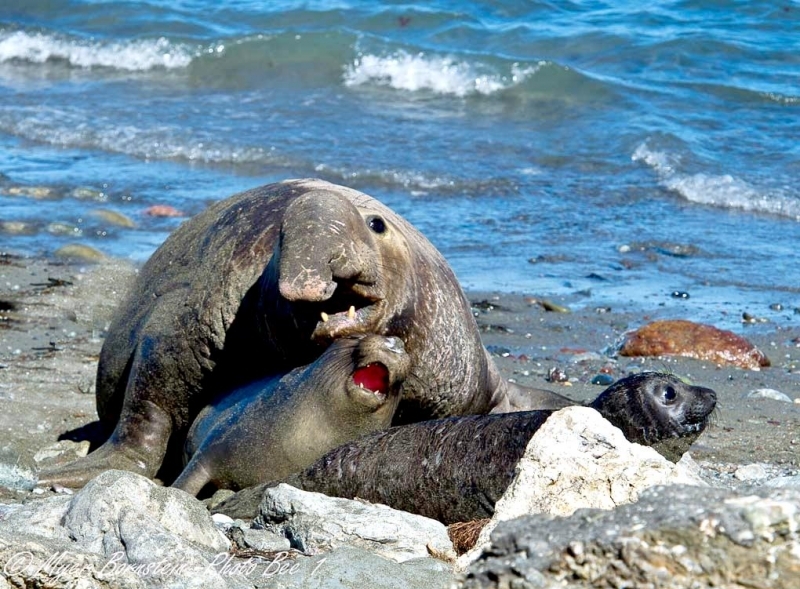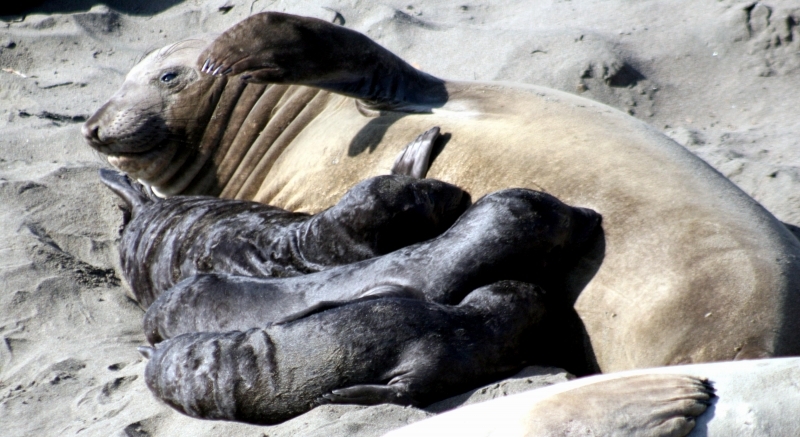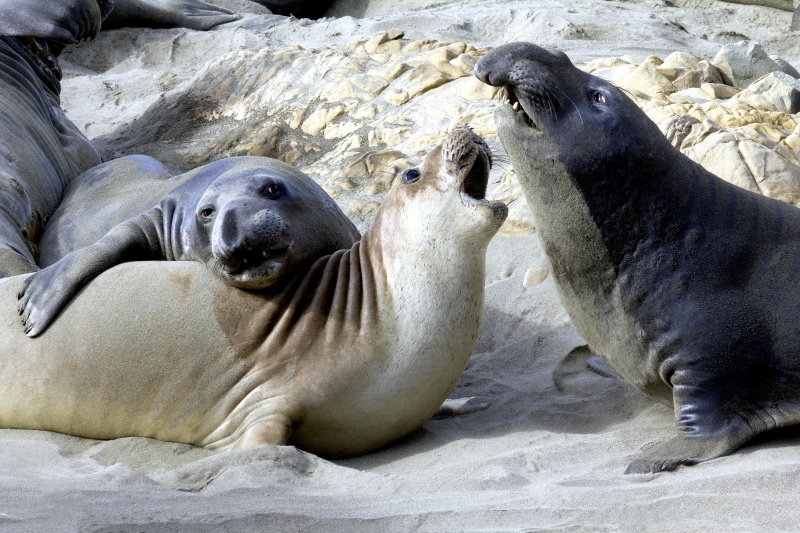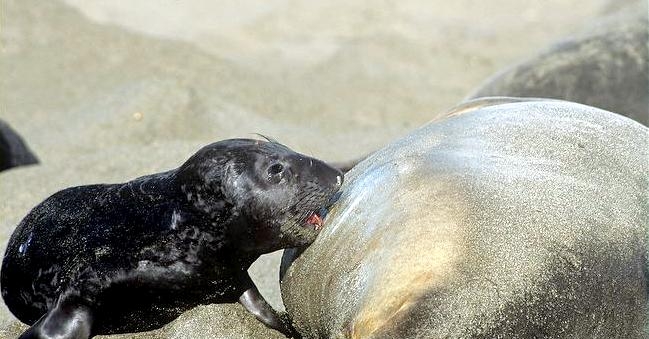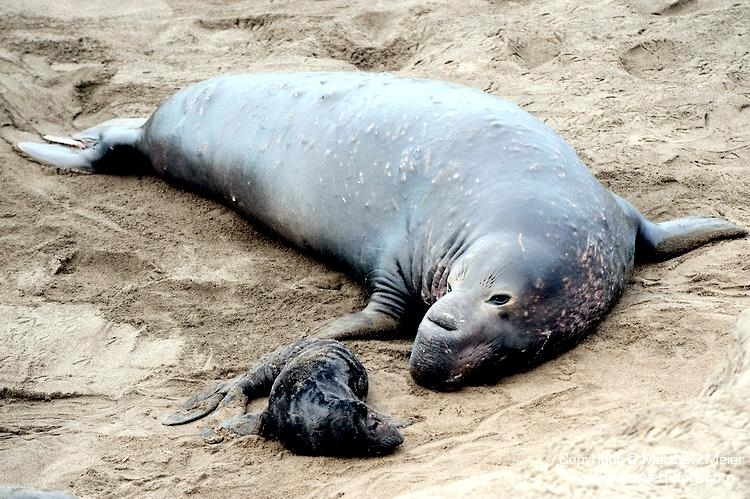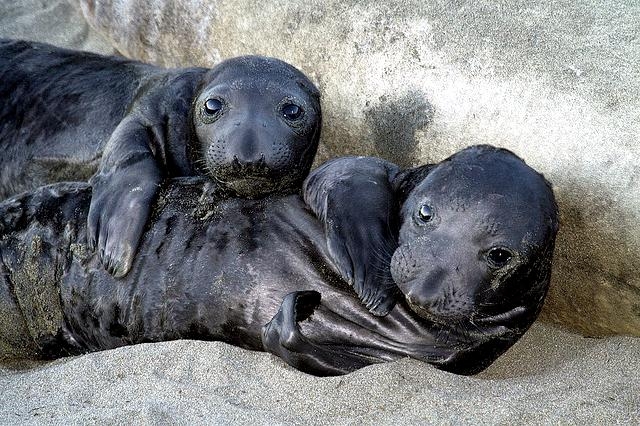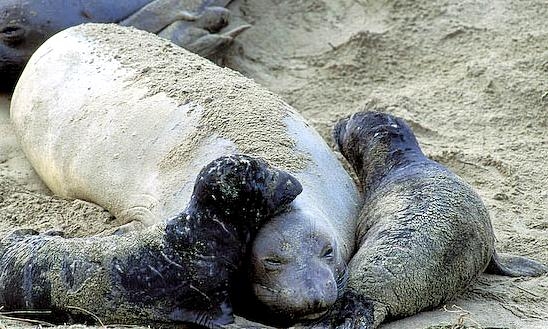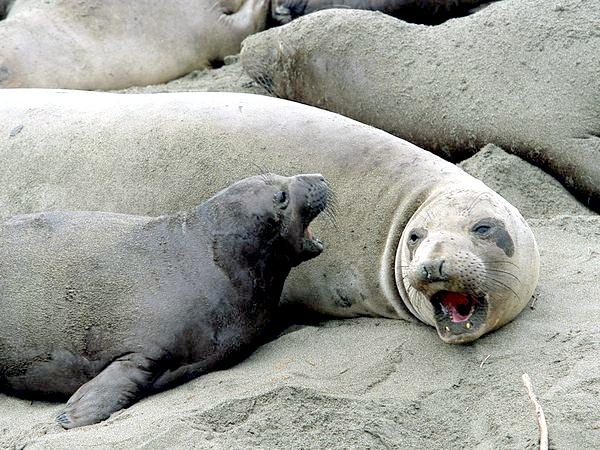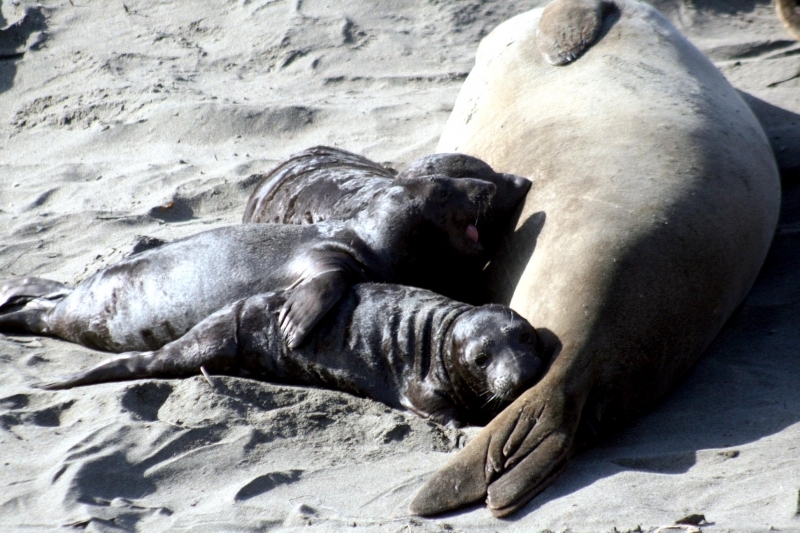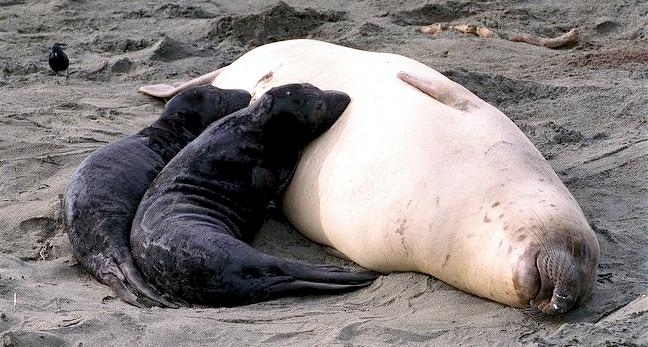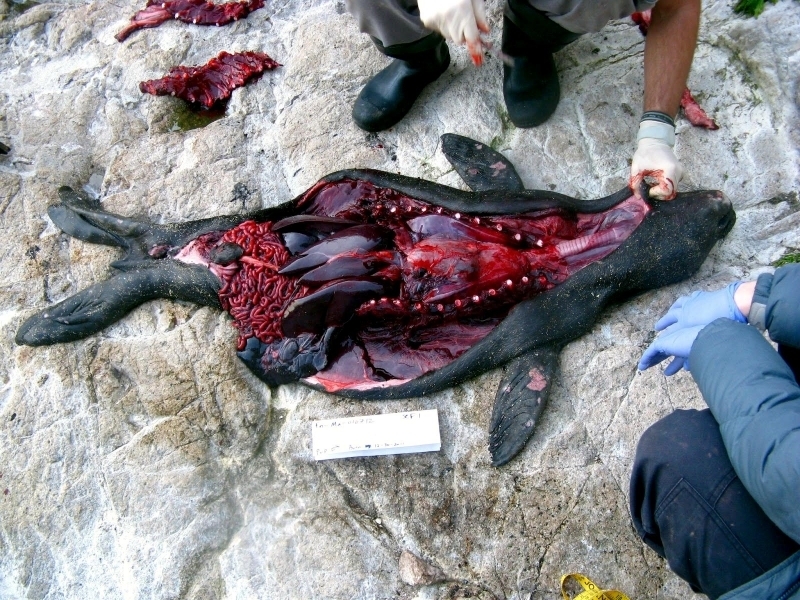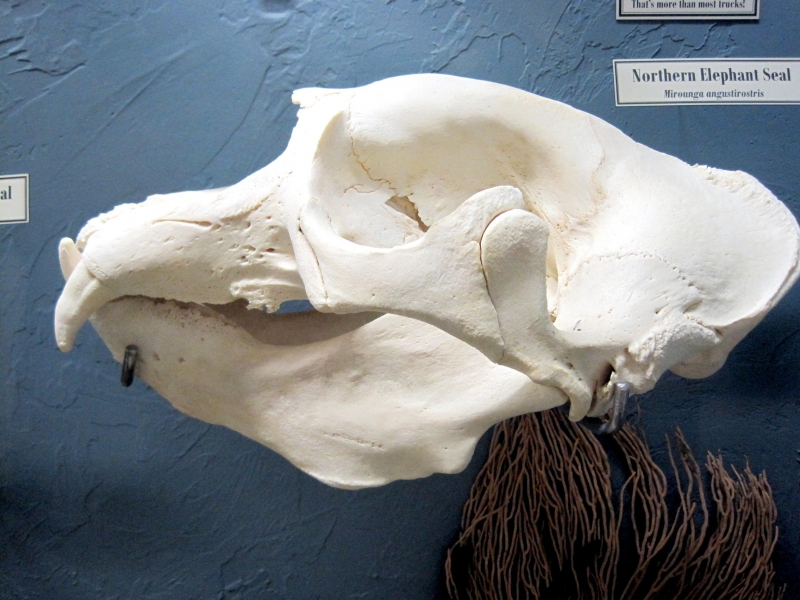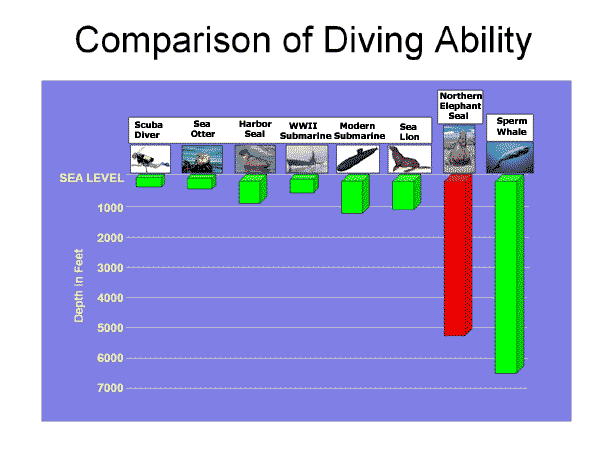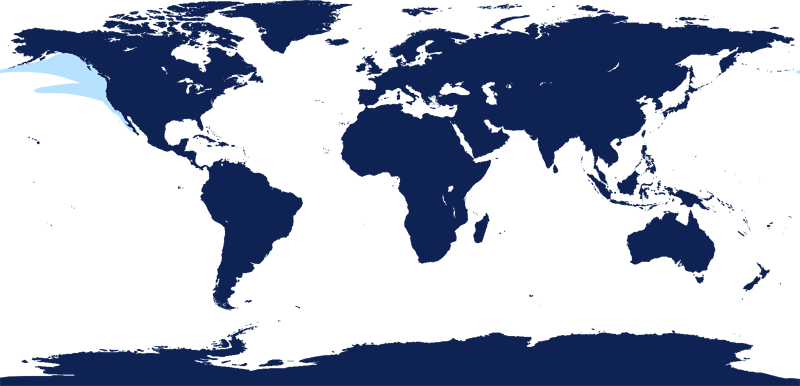“Mirounga angustirostris”
Northern Elephant Seals have characteristically long noses giving them their common name. This species is sexually dimorphic with adult males weighing 2 to 7 times more than adult females. Adult males measure up to 4.5 meters long and weigh up to 2,300 kilograms, adult females measure up to 3.6 meters long and weigh up to 750 kilograms. The Northern Elephant Seal coat is dark gray to brown. Males can live up to 17 years, females up to 22 years. They are a highly migratory species and are well-known for their incredible diving abilities. Like their cousins the Southern Elephant Seal, these seals are able to dive very deeply for extremely long periods of time compared to other seals. Males dive to 350-800 meters on average and females to 300 to 600 meters. Their dives average 13 to 17 minutes, longer for males, followed by a brief 3 minute surface interval. The deepest dive for a Northern Elephant Seal was recorded to be 1,500 meters deep for 1.5 to 2 hours. These seals remain submerged 80-95% of the time that they spent at sea. Researchers have identified 5 different dive patterns typically associated with either travel, sleep or foraging.
Northern Elephant Seals can be found on the coast & offshore islands of California. They migrate twice a year from California to Mexico and males migrate to the feeding areas in the north Pacific Ocean, in the Gulf of Alaska and near the eastern Aleutian Islands of Alaska. Females tend to feed further south between 40-45°N. The Northern Elephant Seal is the only mammal with a biannual migratory pattern. The first migration occurs following the winter breeding season and the second after the summer molt. Males spend about 250 days at sea each year and travel at least 21,000 kilometers and the females spend about 300 days at sea and travel at least 18,000 kilometers. Population estimates for California is about 84,000 and 32,000 are estimated along Mexico based on data from 1991. Northern Elephant Seals congregate onshore during breeding season, molt season & the juvenile haul-out period in the autumn. Cephalopods are an important component of the Northern Elephant Seal diet with other prey of fish, skates, rays, sharks and crabs.
Northern Elephant Seals are preyed on by Great White Sharks, a significant cause of mortality in juvenile seals and sometimes by Killer Whales. Pups are born about 1.5 meters in length and 30 kilograms in weight. Females reach sexual maturity at 3-5 years of age, males at 4-6 years although males reach their reproductive peak at 9-12 years. Large adult males arrive at the breeding grounds in December to compete for access to females who usually give birth to the previous year’s pup in January 2-7 days after her arrival. The pups are born with black hair which is replaced by a silvery coat after they are weaned, about 3-4 weeks later. Toward the end of the nursing period, the mother mates then leaves to feed. Her pup lives off its blubber reserves for 1-2 months before hunting for its own food. Adults do not feed while they are ashore during breeding season, some males for up to 3 months losing approximately 36% of their weight during this period. Northern Elephant Seals undergo an annual molt on shore during the warmer months between March-July for about 2-3 weeks. They undergo a “radical molt” because the fur comes off in sheets. Each sex & age class molts at a different time, beginning with immature seals early in the season and ending with the bulls, which molt in July. In the autumn just prior to the breeding season, juvenile Northern Elephant Seals congregate at the colony sites for around 2 months, beginning in late September and extending through to November.
